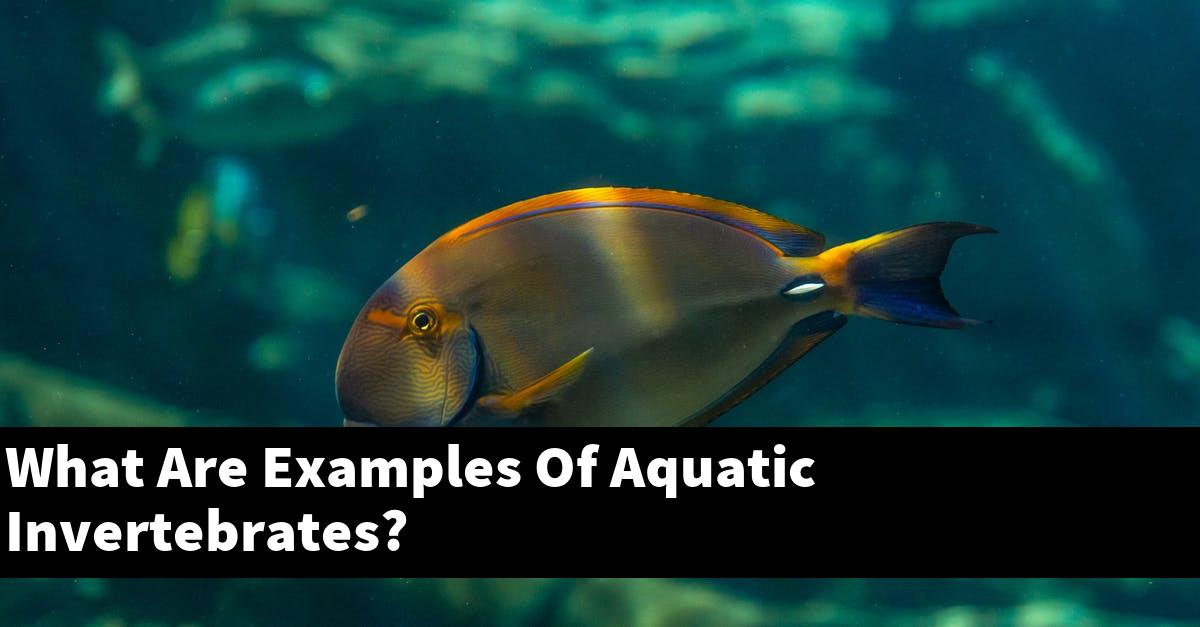Aquatic invertebrates are animals that live in water and lack a backbone. Examples of aquatic invertebrates include mollusks, crustaceans, and insects.
Aquatic invertebrates are an important part of the food chain and provide food for fish, amphibians, and reptiles.
What is other aquatic invertebrates?
Other aquatic invertebrates include things like crabs, shrimp, and crayfish. These animals are typically found in bodies of water, and are a source of food for a lot of people.
What are 3 different types of aquatic invertebrates?
There are three different types of aquatic invertebrates: crustaceans, mollusks, and anapsids. Crustaceans are the most common type of aquatic invertebrate, making up over 70% of all aquatic organisms.
Crustaceans include crabs, shrimp, and lobster. Mollusks are the second most common type of aquatic invertebrates, and include clams, oysters, and squid.
Anapsids are the least common type of aquatic invertebrates, and include leeches, lizards, and snakes.
What are aquatic invertebrates?
Aquatic invertebrates are animals that live in water. They include things like fish, jellyfish, and crabs.
Why are aquatic invertebrates important?
Aquatic invertebrates are important because they are keystone species. Keystone species are those that have a disproportionate impact on the ecosystem in which they live.
Aquatic invertebrates play a role in the cycling of nutrients, the distribution of prey and predator populations, and the overall health of a lake or river.
What is an example of an aquatic macroinvertebrate?
An example of an aquatic macroinvertebrate is a water strider.
What is the difference between invertebrates and vertebrates?
Vertebrates are animals with backbones. Invertebrates are animals without backbones.
Vertebrates include everything from fish to mammals, while invertebrates include everything from worms to spiders. The main difference between invertebrates and vertebrates is that vertebrates have a spinal cord, which allows them to move their bodies and faculties in different ways.
Invertebrates do not have a spinal cord, and they cannot move their bodies or faculties in the same ways as vertebrates.
What do aquatic invertebrates eat?
Aquatic invertebrates eat plant and animal material. In general, invertebrates are predators and scavengers.
Predators take down prey while scavengers consume the leftovers. Invertebrates are able to feed on a variety of different types of food, including algae, bacteria, detritus, small fish, and even other invertebrates.
Are fish aquatic invertebrates?
Fish are aquatic invertebrates. They have gills that extract oxygen from water and they have a head, body, and tail.
Fish are cold-blooded and their heart rate and breathing rate depend on their surroundings.
What are some examples of aquatic organisms?
Some examples of aquatic organisms include fish, amphibians, and aquatic invertebrates. Fish are a common type of aquatic organism, and include both fresh and salt water varieties.
Amphibians include frogs, toads, and salamanders, and are typically terrestrial organisms that have adapted to living in water. Aquatic invertebrates include nematodes, cnidarians, and mollusks.
Nematodes are small, worm-like creatures that live in soil and water, and are important in controlling pests. Cnidarians are a subclass of animals that include jellyfish, coral, and anemone.
Jellyfish are popularly known as “sea creatures”, and are considered a delicacy in some parts of the world. Mollusks include clams, oysters, and squid, and are important in the food chain.
What are 5 examples of invertebrates?
1. An insect
2. A crustacean
3. A mollusk
4. A jellyfish
5. A spider
Conclusion
Aquatic invertebrates are animals that live in water and lack a backbone. Common examples include clams, oysters, squid, octopuses, and crabs.
These animals play an important role in the marine ecosystem by providing food for larger predators and recycling nutrients.

